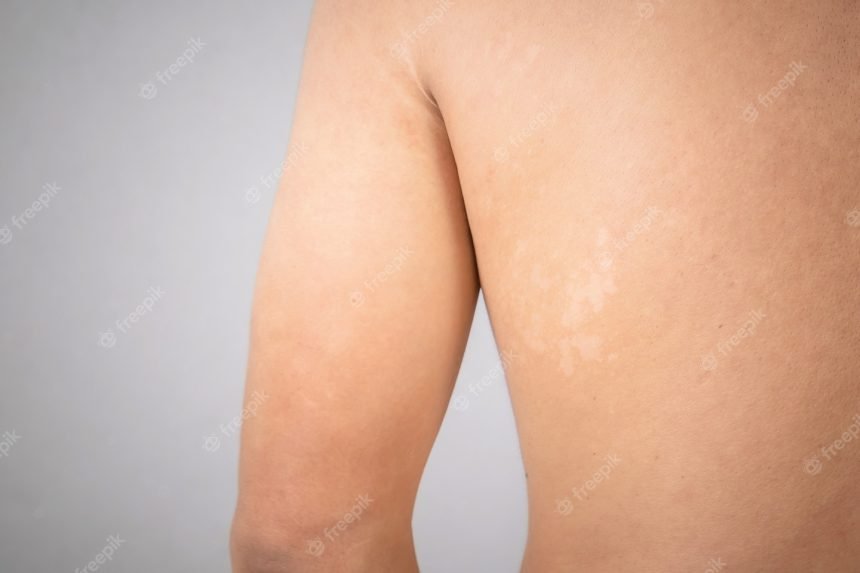
Introduction
Tinea versicolor, often referred to as “pityriasis versicolor,” is a common skin condition caused by a yeast-like fungus called Malassezia. While it’s not harmful, it can be a nuisance due to its impact on skin coloration and texture. The good news is that managing tinea versicolor can be achieved not only through medication but also by adopting a suitable diet. In this article, we’ll explore the best dietary practices to help you maintain healthy, beautiful skin.
Understanding Tinea Versicolor
What is Tinea Versicolor?
Tinea versicolor manifests as discolored patches on the skin, often lighter or darker than the surrounding skin. These patches are a result of the overgrowth of the Malassezia fungus, which naturally resides on the skin.
Common Symptoms
Before delving into dietary solutions, it’s essential to recognize the common symptoms of tinea versicolor:
- Patches of pink, white, or brown on the skin.
- Itching or discomfort, especially in warm and humid conditions.
- Scaling or flaking of affected skin.
The Role of Diet in Managing Tinea Versicolor
Antifungal Foods
Incorporating antifungal foods into your diet can be a game-changer in managing tinea versicolor. These foods include:
1. Garlic
Garlic is renowned for its antifungal properties, thanks to allicin, a natural compound found in garlic cloves.
2. Coconut Oil
Coconut oil contains lauric acid, which has potent antifungal properties. It can be consumed or applied topically for added benefits.
3. Turmeric
Turmeric’s active compound, curcumin, possesses antifungal and anti-inflammatory properties that can help combat tinea versicolor.
Probiotics for Gut Health
Maintaining a healthy gut is essential in managing tinea versicolor. Probiotics, found in foods like yogurt and kefir, promote a balanced gut microbiome, which can help prevent fungal overgrowth.
Foods to Avoid
To effectively manage tinea versicolor, it’s crucial to avoid foods that may exacerbate the condition. These include:
1. Sugary Foods
Sugar feeds the Malassezia fungus, making it thrive. Reducing sugar intake is paramount.
2. Dairy Products
Some individuals find that dairy products worsen their tinea versicolor. Experiment with dairy elimination to see if it benefits you.
Holistic Approaches to Tinea Versicolor
1. Maintain Proper Hygiene
Regularly cleanse your skin with gentle, pH-balanced cleansers to reduce the fungus’s presence on your skin.
2. Sun Exposure
Brief exposure to sunlight can help control tinea versicolor, as the UV rays inhibit fungal growth. However, always use sunscreen to protect your skin from UV damage.
3. Stress Management
High stress levels can weaken your immune system, making you more susceptible to tinea versicolor. Incorporate stress-reduction techniques like meditation or yoga into your routine.
Conclusion
In conclusion, managing tinea versicolor involves a multifaceted approach. While diet plays a significant role, it should be combined with proper hygiene, sun exposure, and stress management. By adopting these strategies, you can keep tinea versicolor at bay and enjoy healthy, beautiful skin.
FAQs
1. Is tinea versicolor contagious?
No, tinea versicolor is not contagious. It is caused by a naturally occurring fungus on the skin.
2. Can I use over-the-counter antifungal creams?
Yes, over-the-counter antifungal creams can help treat tinea versicolor. However, consult a dermatologist for severe or persistent cases.
3. How long does it take to see improvements with dietary changes?
It varies from person to person, but you may start noticing improvements within a few weeks of making dietary changes.
4. Are there any specific dietary supplements recommended for tinea versicolor?
Consult a healthcare professional before taking any supplements, as they can guide you on what may be suitable for your condition.
5. Can tinea versicolor recur after treatment?
Yes, tinea versicolor can recur, especially in warm and humid conditions. It’s essential to continue preventive measures even after treatment.







